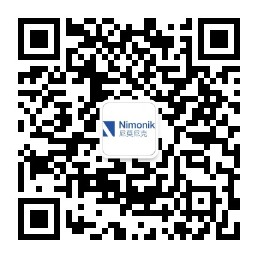
本期要闻 Highlights of the Month
Ministry of Finance, State Administration of Taxation, Ministry of Water Resources: Implementation Measures for the Pilot Reform of the Water Resource Tax
自2016年7月1日起,我国已先后在河北、北京、天津等10个省(区、市)开展了水资源税改革试点。改革试点在抑制地下水超采、转变用水方式、促进节水改造、规范取用水行为等方面取得了明显成效。新的水资源税改革试点实施办法,将统筹现有水资源税改革试点制度和水资源费征收制度,在保持税制要素和基本框架稳定的前提下,实现水资源费制度向水资源税制度的平稳转换。
本次新发布的《办法》主要对水资源税的纳税人、计税依据、税额标准、税收优惠等税制要素作出了具体规定。
(一)纳税人和计税依据。水资源税的纳税人为直接从江河、湖泊(含水库、引调水工程等水资源配置工程)和地下取用水资源的单位和个人。水资源税实行从量计征。
(二)税额标准。水资源税根据水资源状况、取用水类型和经济发展等情况实行差别税额。《办法》以附件形式规定《各省、自治区、直辖市水资源税最低平均税额表》,具体适用税额由各省、自治区、直辖市确定。同时,要求对取用地下水、水资源严重短缺和超载地区取用水从高确定税额。
(三)税收优惠。对规定限额内的农业生产取用水等五种情形,免征水资源税;对用水效率达到国家用水定额先进值的相关纳税人,减征水资源税。
(四)收入归属。水资源税收入全部归属地方(原水资源费收入实行中央和地方1:9分成),适当增加地方自主财力。
(五)税收征管。健全税务机关和水行政主管部门协作征税机制,强化对纳税人取水计量设施(器具)监管,规范和加强税收征管。
Since July 1, 2016, China has carried out pilot program of levying water resource tax in 10 provinces /autonomous regions / municipalities, including Hebei, Beijing and Tianjin etc.. The pilot program have achieved remarkable results, e.g. curbing the over-exploitation of groundwater, transforming water consumption patterns, promoting water-saving upgrade, and regulating water extraction/use behaviors. The new implementation measures will integrate the pilot program of water resource tax with the existing water resource fee collection system, and achieve the smooth transition from the water resource fee system to the water resource tax system while maintaining the stability of the tax system elements and basic framework.
The newly released “Measures” primarily provides specific requirements on key elements of the water resource tax system, including taxpayers, tax basis, tax rate standards, and tax incentives.
Taxpayers and Tax Basis: The taxpayers of the water resource tax are units and individuals that directly extract and use water resources from rivers, lakes (including reservoirs, water diversion, and water regulation projects), and groundwater. The water resource tax is levied based on the quantity of water extracted.
Tax Rate Standards: The water resource tax is differentiated based on water resource availability, type of water extraction, and economic development by location. The Measures set out a “Minimum Average Water Resource Tax Rate Table for Provinces, Autonomous Regions, and Municipalities” as an Annex, while the final tax rates will be determined by each province, autonomous region, or municipality. Additionally, higher tax rates are required for groundwater extraction and for areas with severe water scarcity or overuse.
Tax Incentives: Exemptions from the water resource tax apply to five specific scenarios, such as water withdrawal for agricultural production within the prescribed limits. Tax reductions are applied to taxpayers who achieve national advanced water efficiency standards.
Revenue Allocation: All water resource tax revenue will be allocated to local governments (previously, water resource fees will be divided between the central and local governments at a 1:9 ratio), to appropriately increase local financial autonomy.
Tax Collection and Management: A collaborative tax collection mechanism between tax authorities and water administration departments will be established. This includes strengthening supervision over taxpayers’ water extraction metering facilities and standardizing and enhancing tax collection and administration.
最新国家法律法规National Updates
《管理办法》在《国务院办公厅关于加强入河入海排污口监督管理工作的实施意见》基础上,细化入海排污口监督管理要求,建立入海排污口长效监督管理机制。《管理办法》将所有类型的入海排污口全部纳入监管,按照入海排污口对海洋生态环境的影响程度,兼顾考虑目前监管基础,将其分为重点管理、简化管理和一般管理三类;同时明确了入海排污口事前、事中、事后全过程监管要求,对新修订的海洋环境保护法进行了有效补充。Based on the “Implementation Opinions of the General Office of the State Council on Strengthening the Supervision and Management of Sewage Outfalls into Rivers and Seas”, the “Measures” refines the supervision and management requirements of sewage outfalls into the sea and establishes a long-term supervision and management mechanism.
The “Measures” incorporates all types of sewage outfalls into the sea under supervision, by categorizing them into key management, simplified management and general management according to the impact on the marine ecosystem, taking into account the current supervision situation. The “Measures” stipulates the supervision requirements for the whole process, i.e. prior, during and after the installation of sewage outfalls into the sea, which effectively supplements the newly revised Marine Environmental Protection Law.
最新国家标准 Latest National Standards
GB/T 32151.20-2024温室气体排放核算与报告要求第20部分:家具生产企业
GB/T 32151.20-2024 Requirements of the Greenhouse Gas Emissions Accounting and Reporting—Part 20: Furniture Production Enterprise
GB/T 32151.23-2024温室气体排放核算与报告要求第23部分:种植业机构
GB/T 32151.23-2024 Requirements of the Greenhouse Gas Emissions Accounting and Reporting—Part 23: Agricultural Farming Organization
GB/T 32151.27-2024 温室气体排放核算与报告要求第 27 部分:陆上交通运输企业
GB/T 32151.27-2024 Requirements of the Greenhouse Gas Emission Accounting and Reporting—Part 27: Land Transportation Enterprise
GB/T 32151.47-2024温室气体排放核算与报告要求第47部分:化纤生产企业
GB/T 32151.47-2024 Requirements of the Greenhouse Gas Emission Accounting and Reporting—Part 47:Chemical Fiber Production Enterprise
GB/T 44905-2024 温室气体产品碳足迹量化方法与要求电解铝
GB/T 44905-2024 Greenhouse Gases—Carbon Footprint of Products—Requirements and Guidelines for Quantification
立法草案 Policy Initiatives & Developments
办法修订了原国家安全监管总局、原保监会、财政部于2017年印发的《安全生产责任保险实施办法》(安监总办[2017]140号)。办法规定从事矿山、危险化学品、烟花爆竹、交通运输、建筑施工、民用爆炸物品、金属冶炼、渔业生产等高危行业、领域生产经营活动的单位,应当投保安责险,同时明确投保与承保方的责任义务。办法要求安责险的保障范围应当覆盖全体从业人员,保险金额实行同一标准,不得因用工方式、工作岗位等差别对待。
The “Measures” revises the “Implementation Measures for Work Safety Liability Insurance” issued in 2017 by the former State Administration of Work Safety, the former China Insurance Regulatory Commission, and the Ministry of Finance. The “Measures” stipulates that units engaged in high-risk industries and activities, such as mining, hazardous chemicals, fireworks, transportation, construction, civilian explosives, metal smelting, and fishery production, should purchase work safety liability insurance. It also clarifies the responsibilities and obligations of both the insured units and the insurer.
The “Measures” requires that the coverage of work safety liability insurance should extend to all employees, with a uniform insurance amount applied, and should be without discrimination based on employment methods, job positions, or other factors.
征求意见稿明确实行能源效率标识的产品目录(第十七批)包括塔式和机架式服务器、冷水(热泵)机组、水(地)源热泵机组、电力变压器、普通照明用自镇流荧光灯、容积式空气压缩机、家用和类似用途微波炉等12种产品以及其能源效率标识实施规则。规定了对应产品施加能效标识的具体时间要求。
The consultation paper clarifies the implementation of energy efficiency labeling of the 12 products listed in the “Catalogue of Products Implementing Energy Efficiency Labeling (17th Batch)”, such as tower and rack servers, chilled water (heat pump) units, water (ground) source heat pump units, electrical transformers, self-ballasted fluorescent lamps for general lighting, volumetric air compressors, household and similar use microwave ovens. It also specifies the timeline requirements for applying energy efficiency labels to the corresponding products.
通知首次从生态环境角度对行业布局规划、选址阶段提出了分区发展要求,充分发挥了环境影响评价源头预防作用,属于行业创新管理制度。通知要求严格落实项目生态环境保护措施及要求。结合陆域风电、光伏发电建设项目开发特性和生态环境影响特征,提出加强野生动物保护、强化植物生态修复、严格控制噪声和光影闪烁影响、完善施工期和运行期污染防治措施、大力推进绿色施工、加强生态环境监测及跟踪评估、开展绿色风电和绿色光伏专项研究等方面的要求。分要素提出了适应绿色高质量发展的生态环境保护具体要求,增强了后续在环评管理中落实的可操作性。征求意见稿的实施将有助于加强陆域风电、光伏发电建设项目的生态环境保护,减少项目对土地、植被、生物多样性等方面的影响,保护生态系统的稳定性和完整性,推动可再生能源产业的可持续发展。The Notice, for the first time, proposes requirements for zoning development from an ecological and environmental perspective during industry layout planning and site selection stages, fully leveraging the preventive role of environmental impact assessments at the source. This represents an innovative management approach for the industry.The Notice mandates strict implementation of ecological and environmental protection measures and requirements for projects. Taking into account the development characteristics and ecological impacts of onshore wind power and photovoltaic power generation projects, it sets forth requirements for strengthening wildlife protection, enhancing vegetation restoration, strictly controlling noise and shadow flicker impacts, improving pollution prevention measures during both construction and operation phases, promoting green construction practices, strengthening ecological environment monitoring and follow-up assessments, and conducting special studies on green wind power and green photovoltaic power. Specific ecological and environmental protection requirements are presented for each element to support green, high-quality development, enhancing the practicality of subsequent implementation within environmental impact management.The implementation of the consultation paper will help strengthening ecological and environmental protection for onshore wind power and photovoltaic power generation projects, reducing the projects’ impact on land, vegetation, and biodiversity, protecting the stability and integrity of ecosystems, and promoting the sustainable development of the renewable energy industry.
最新地方性法规 Regional Updates
Henan Province: Urban Drainage and Sewage Treatment Regulations
《条例》适用于河南省行政区域内城镇排水与污水处理的规划、建设、管理,城镇排水与污水处理设施的使用、运营、维护与保护,以及城镇内涝防治等活动。
《条例》要求建设工程施工范围内有排水管网等城镇排水与污水处理设施的,建设单位应当与施工单位、设施维护运营单位共同制定设施保护方案并备案;因工程建设需要拆除、改动城镇排水与污水处理设施的,建设单位应当制定拆除、改动方案,报所在地市、县级人民政府城镇排水与污水处理主管部门审核,并承担重建、改建和采取临时措施的费用。
The “Regulations” applies to the planning, construction, and management of urban drainage and sewage treatment system as well as the use, operation, maintenance, and protection of urban drainage and sewage treatment facilities, and flood prevention activities within the administrative region of Henan Province.
The “Regulations” requires that if urban drainage and sewage treatment facilities, such as drainage pipelines, are present within the construction area, the construction unit must collaborate with the construction contractor and the facility maintenance and operation unit to develop a facility protection plan and file it for record. If it is necessary to dismantle or alter urban drainage and sewage treatment facilities due to construction needs, the construction unit must prepare a dismantling or alteration plan, submit it for review to the municipal or county-level urban drainage and sewage treatment authority, and bear the costs of reconstruction, renovation, and any temporary measures taken.
办法适用于上海市行政区域内开展环境污染责任保险活动及相关监督管理工作。上海市行政区域内投保环境污染责任保险的单位、承保环境污染责任保险的保险机构,应当遵守本办法。
办法要求收集、贮存、运输、利用、处置危险废物的单位以及纳入《上海市浦东新区绿色金融发展若干规定》投保范围内的企业,应当投保环境污染责任保险。承保单位应当每年从环境污染责任保险的保费中提取一定比例为投保单位提供环境风险防控服务。
The “Measures” applies to activities related to environmental pollution liability insurance and associated supervision and management within Shanghai. Units within Shanghai Municipality that purchase environmental pollution liability insurance, as well as insurance institutions that underwrite such insurance, must comply with these Measures.
The “Measures” requires that units engaged in the collection, storage, transportation, utilization, or disposal of hazardous waste, as well as enterprises within the insurance coverage scope outlined in the “Provisions of Pudong New Area of Shanghai Municipality on Promoting the Green Finance Development,” must insure against environmental pollution liability. Insurers are required to allocate a certain proportion of the annual premiums from environmental pollution liability insurance to provide environmental risk prevention and control services to the insured units.
本《指南》中所称企业均为工贸行业(冶金、有色、建材、机械、轻工、纺织、烟草、商贸等)以及涉及危险化学品使用的企业。《指南》从建设项目总体安全要求、企业基础安全管理、工艺安全管理、危险化学品的采购、储存、使用与废弃、应急管理等方面对企业安全管理提出指引,并针对重点行业(喷涂、腐蚀等)提出特殊管理要求。《指南》仅作为企业涉及危险化学品使用的安全生产管理技术指引。
The enterprises referred to in the “Guidelines” are those in the general industries and trading industry and involved in the use of hazardous chemicals. It applies to enterprises in the general industries and trade industry, such as metallurgy, non-ferrous metals, building materials, machinery, light industry, textile, tobacco, commerce and trade. The “Guidelines” provides guidance on life cycle safety management for enterprises using hazardous chemicals, including overall safety requirements for construction projects, basic safety management, process safety management, procurement, storage, use, and disposal of hazardous chemicals, and emergency management. It also specifies special management requirements for key industries (e.g., painting, corrosion). The “Guidelines” is intended to serve as a technical guideline for the safe production management of enterprises involved in the use of hazardous chemicals.
本法规月刊是由伊尔姆环境资源管理咨询(上海)有限公司(ERM)、Nimonik 安纬同(上海)管理咨询有限公司(Nimonik)与大成律师事务所上海分所(Dentons Shanghai)联合制作。我们在确保其内容准确无误的同时,不对其任何可能的错误或疏忽承担责任。本刊中的内容不可作为法律依据,亦不可视为对个案的释义。因参考本刊物内容导致的任何损失,ERM, Nimonik 与大成律师事务所将不承担任何责任。如需寻求专业意见,请咨询有关专业顾问。
This newsletter is prepared for clients and professional associates by ERM, Nimonik and Dentons Shanghai. Whilst every effort has been made to ensure accuracy, no responsibility can be accepted for errors and omissions, however caused. The information contained in this newsletter should not be relied on as legal advice and should not be regarded as a substitute for detailed advice in individual cases. No responsibility for any loss occasioned to any person acting or refraining from action as a result of material in this newsletter is accepted by ERM, Nimonik or Dentons Shanghai. If advice concerning individual problems or other expert assistance is required, the services of a competent professional adviser should be sought.







 沪公网安备31010602007801
沪公网安备31010602007801